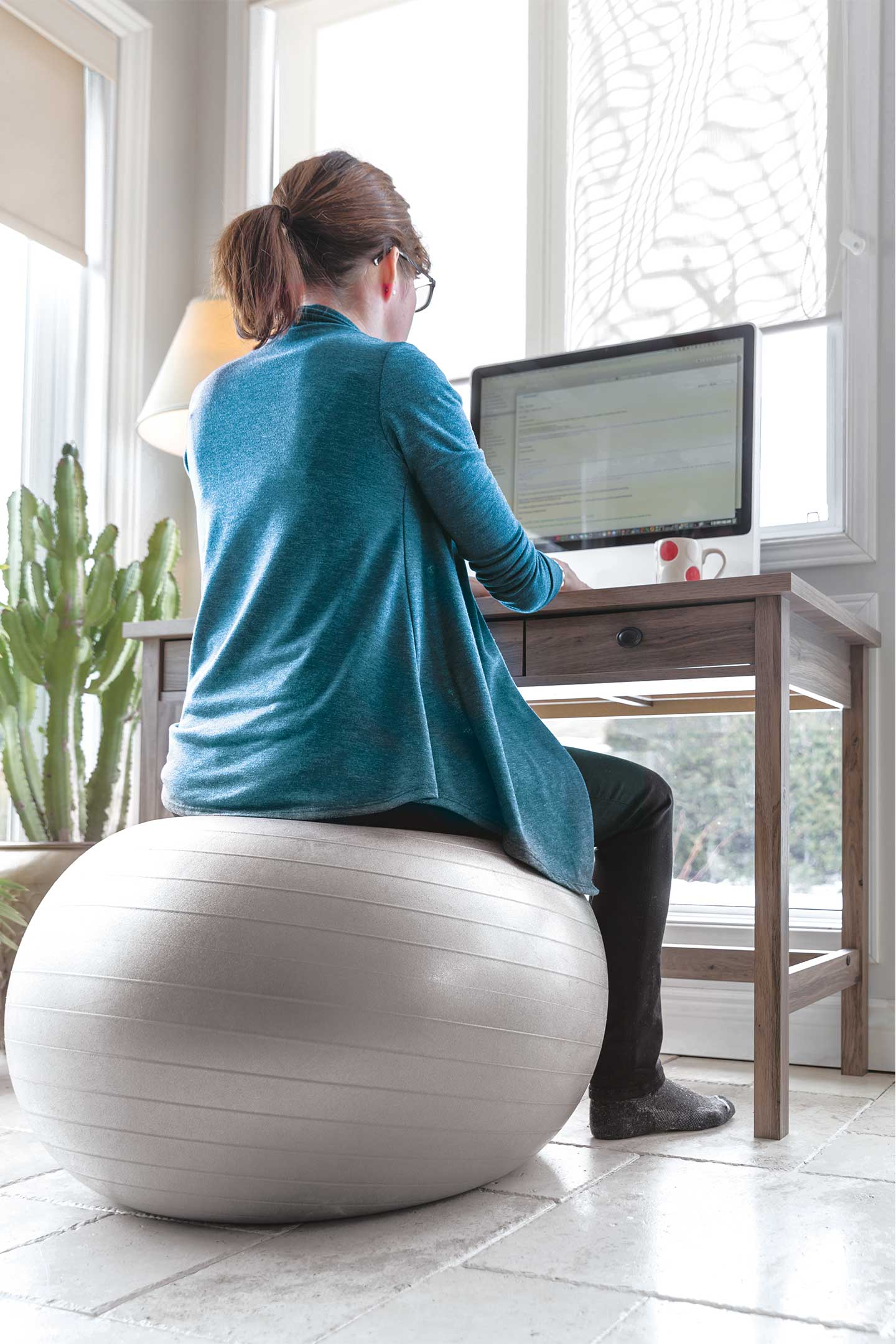What’s the Cause?
Back pain, especially chronic back pain, can be a pervasive and even debilitating health problem in someone’s life. Here, we’re exploring some of the most common causes of back pain, as well as how they can be treated.
By Anna Hill


Physical Therapist,
CHI Memorial
Physical Therapy
The common saying “You don’t appreciate what you’ve got until it’s gone” is a painfully evident truth when it comes to a healthy back. When your back feels fine, you rarely think about it; however, when it’s in pain, it’s impossible to ignore. Back pain, depending on its severity, can greatly hinder your daily life: It makes it uncomfortable to walk, to sit, to stand, even to lie down. Thankfully, there are a myriad of options when it comes to treating back pain, but first, it’s important to determine what’s causing it. The following are some of the most prevalent causes of back pain, along with advice from medical experts on what to do about them.
Pulled Muscles and Spasms
As back pain can be caused by a number of things, it’s often difficult to determine exactly what the culprit is. However, a pulled muscle is a common cause, especially for pain or spasms that have come on suddenly and weren’t an issue at any point beforehand. “A pulled muscle can occur due to excessive stress, such as overworking the muscle, or if it’s overstretched, which can occur suddenly and will lead to a sharp pain,” says Dr. John DeVaul, a physical therapist with CHI Memorial. Other symptoms include bruising, tenderness, painful movements, or a loss of comfort in certain commonly used positions.


Pain Management
Physician,
Hamilton Health
Care System
“Frequently, if a pulled muscle is the problem, patients will complain of a muscle spasm-type sensation, which is similar to a charley horse, but in your lower back,” explains Dr. Benjamin Geddes, an orthopedic spine surgeon with the Center for Sports Medicine and Orthopaedics. “The good news is that a pulled muscle in your back is very treatable,” he says. Often, your physician will treat pulled muscles or spasms with non-steroidal anti-inflammatory (NSAID) medication or with muscle relaxers. Some physical therapy might be prescribed to assist your back in healing as well, and, fortunately, symptoms are usually resolved within four to six weeks.



Orthopedic Spine Surgeon,
Center for Sports Medicine and Orthopaedics
Arthritis
Arthritis is another common source of back pain; however, it is more likely to occur in older adults than younger. If it is arthritis that’s causing your back to hurt, it’s likely that it’s causing pain in other joints as well. Back pain due to arthritis usually presents itself as stiffness or a dull ache in your neck or lower back – the latter of which is due to stress in the spine’s facet joints, which are the connections between the bones of the spine. “Treatment for this type of arthritis is initially with conservative therapy, including physical therapy, medications, and other treatments such as chiropractor visits or home exercise plans,” says Dr. Joshua Hare, a physician specializing in pain management with Hamilton Health Care System. However, if these treatments prove to be ineffective, there are interventional procedures that can be done, such as injections or even surgery, if necessary. For a medical diagnosis of this issue, imaging such as x-rays is often the most reliable.
Posture and Weight
Often, back pain can be a result of certain aspects of one’s lifestyle. Poor posture can put a strain on your musculoskeletal system over time, and things like constant slouching or hunching over a work desk can shift your body weight from being supported by your skeleton, as it ought to be, to being supported by muscles and ligaments, which causes strain and discomfort. “Over time, the body adapts in a negative way, and this promotes issues such as arthritis, back strain, and disc herniation, as well as many other orthopedic issues,” advises DeVaul. Maintaining good posture helps to keep weight and pressure distributed properly throughout your body and can reduce the risk of discomfort in your neck and back.
Weight can also be a common cause of back pain, particularly in the lower back. Excess weight creates a higher-than-usual burden on the spine, and the resulting strain on it might cause frequent aches in your lower back. According to Dr. James Osborn, an orthopedic surgeon with the Comprehensive Spine Institute, “Maintaining an appropriate body weight can be difficult, but it can help reduce the load on your spine. Gentle routine exercise programs like walking or water aerobics can be very helpful in reducing back or neck pain, managing weight, and, as a side benefit, helping manage other medical conditions.”


Orthopedic Surgeon,
Comprehensive Spine Institute
Herniated Discs
A herniated disc – sometimes called a ruptured disc – occurs when the inner portion of a vertebral disc pushes through a crack in the outer portion. This often leads to a pinched nerve in that location of the spine, which will cause symptoms that are referred to as sciatica. “This can be pain that radiates into the buttocks or down the legs, sometimes reaching the feet,” Geddes explains. “It can also include numbness, weakness, and, in extreme cases, it can affect urination.” Pain might also be exacerbated with certain motions, such as bending forward or slumping. A diagnosis for a herniated disc is typically determined via a physical exam. “This diagnosis is usually followed by a trial of treatments such as physical therapy, medications, home exercise programs, or chiropractic treatments. Once this is complete, if the pain persists, then we would obtain an MRI scan to get definitive pictures of your spine to confirm the diagnosis,” says Hare. If symptoms don’t resolve, then injections or surgery might be necessary.


Preventing Back Pain
Unfortunately, back pain from time to time is simply part of life. However, there are a few things you can do to increase your chances of a healthy back. As mentioned previously, maintaining a healthy weight can go a long way in preventing an achy lower back, and Geddes emphasizes this point. “Sometimes, surgery can be avoided altogether if the patient loses weight, because the symptoms either go away entirely or become manageable,” he says. It’s also important to keep good posture, not only in daily activities, but in manual labor such as lifting heavy objects as well. When it comes to being active, take care that you do your exercises correctly, and always do warm-up and warm-down stretches before and after working out. “Family history and previous spine injuries can also put you at risk for chronic back pain,” says Osborn, so it’s important to discuss these with your physician at your regular visits.
The human spine is complex, and back pain can be fairly common. Understanding what’s causing it is the first step toward feeling better, and it’s never too late to take preventative steps toward a healthy back. HS

